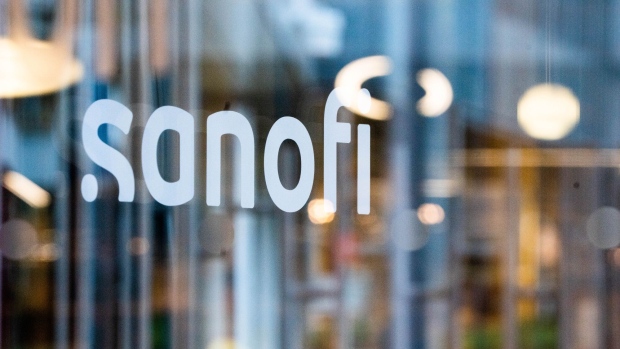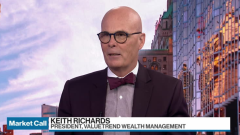Oct 27, 2023
Sanofi CEO Shocks Investors With Investment Plan, Few Details
, Bloomberg News

(Bloomberg) -- When the day began, Paul Hudson, Sanofi’s perennially upbeat chief executive officer, was sitting pretty with a double-digit share gain this year, a world-beating drug in Dupixent and few of the patent cliff worries weighing on his big pharma rivals.
That changed when he stunned investors with a profit warning and plans for higher research-and-development spending that raised doubts about future earnings — and then said he’d fill in details at an investor event in about six weeks.
The move to cut some of Sanofi’s financial targets for the next two years in service of speeding up the pipeline of medicines had one big effect on Friday: blunting the impact of Sanofi’s decision, long anticipated, to separate its consumer health division.
Instead of benefiting from that announcement, Sanofi’s shares plunged the most ever, wiping about €25 billion ($26.5 billion) from its market value and erasing all of this year’s gains and more besides. By Friday afternoon, at the end of a 75-minute call with Wall Street analysts and with the stock sliding anew, Hudson was left insisting that his gamble will pay off.
“We have reached the point where we believe we can create more value by taking this approach and we understand there’s some short-term disappointment,” Hudson said. “We’ll show you why it was the right decision.”
The turnabout represents a rare setback for the British-born Hudson, who’s been pushing to transform the French company since he arrived four years ago after a stint as head of pharmaceuticals at Novartis AG. Like his former employer, Sanofi is leaving behind its diversified healthcare model and focusing on cutting-edge therapies — in Sanofi’s case, with a portfolio focused on immunology and vaccines.
The drugmaker warned that the higher investments in R&D and a tax-rate change will push 2024 earnings below this year’s levels, and scrapped a profitability goal for 2025. The new 2024 guidance is about 9% below what analysts had been expecting, Mark Purcell, an analyst at Morgan Stanley, said in a note.
R&D Investment
The ensuing market rout overshadowed Hudson’s updated strategy to turn Sanofi into a “pure play biopharma company,” as he described it to reporters Friday.
Although a consumer health separation promises greater focus on the development of potentially lucrative prescription medications, the move to prioritize R&D raised concerns about higher costs cutting into profit margins, at least over the next couple of years.
Part of that unease stems from the fact that Sanofi appointed a new head of R&D, Houman Ashrafian, in September. Ashrafian sought to reassure analysts on Friday’s call, saying the company has made “tremendous progress” with its clinical efforts in recent years.
“We’ve now arrived at the point where our innovative pipeline requires increased funding to fully exploit the potential of these transformative assets,” he said.
Investors are awaiting more details of that at an R&D day on Dec. 7 in New York, where Hudson pledged Friday to put his “cards on the table” regarding where the bigger investments will go.
What investors appear to fear, Hudson is characterizing as a sign of the French drugmaker’s strength. “We said that when we had earned the right to invest more in R&D, we would, and we reached that point,” he told reporters.
Sanofi is reviewing options for splitting off the consumer health business, but said a “capital markets transaction” to form a separately listed company based in France is the most likely course. The move could occur as soon as the fourth quarter of 2024, it said.
Longer Term
With the step, Sanofi would join the ranks of big pharma peers GSK Plc, Novartis, Pfizer Inc. and Johnson & Johnson, all of which have split off their consumer health divisions to free up resources for developing next-generation therapies for cancer, rare diseases and other ailments.
Bloomberg News first reported in 2019 that Sanofi was considering options for the consumer health arm, saying it could be worth $30 billion. Since then, it’s sold some brands.
Whether Hudson’s approach succeeds will depend on whether Sanofi can generate better long-term value from innovative therapies than from the steady revenue stream of its consumer unit, which sells products such as Allegra for allergies and Gold Bond skin lotions. Hudson talked up the unit’s prospects at a press conference last year.
Some analysts remain upbeat, looking a few years out.
“Our positive investment thesis takes a knock today but we continue to see a superior and sustainable revenue growth story, versus the sector, from 2025 through 2030,” Peter Verdult of Citigroup said in a note.
New Drugs
Sanofi has been bringing new drugs to market as generic competition ramps up for aging multiple sclerosis medicine Aubagio and investors express concern about its reliance on the blockbuster asthma and skin medicine Dupixent.
Dupixent is set to clear $10 billion in sales this year and may wind up doubling that annual figure if it proves as effective as hoped against a chronic lung condition. Unlike most of his rival pharma CEOs, Hudson isn’t facing any major patent expirations for the rest of the decade.
The company is launching new prescription drugs to bolster revenue such as Altuviiio for hemophilia and Beyfortus for respiratory syncytial virus in young children. There’s also Tzield for type-1 diabetes, a drug picked up in the acquisition of Provention Bio Inc.
Investors have been looking for signs that those new products are gaining traction and that Sanofi’s pipeline of experimental medicines is getting stronger. The company has had a few boosts on that front of late, with positive clinical data for new skin therapy amlitelimab and deals for treatments for bowel disease and an invasive form of a digestive pathogen.
(Updates with CEO comments from analyst call)
©2023 Bloomberg L.P.


